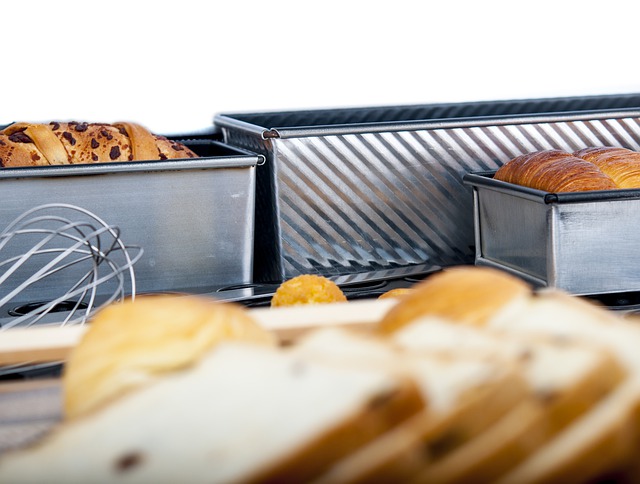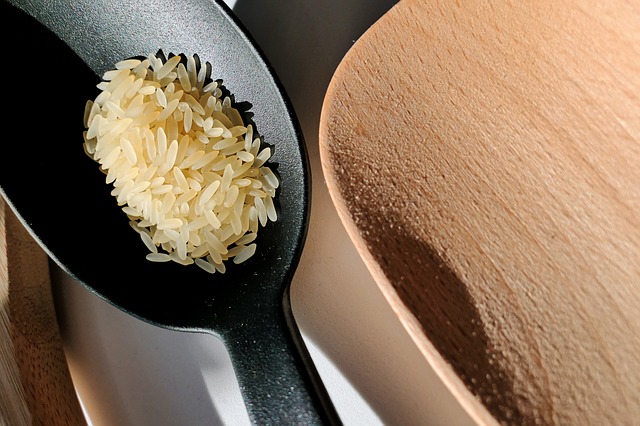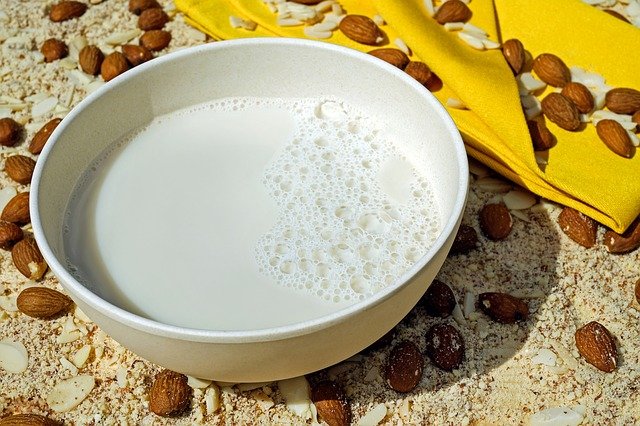Have you ever used a real Japanese chef knife? With a little practice, you can handle one of these fine pieces of steel art like a conductor directing with a wand. You haven’t enjoyed slicing or chopping until you’ve worked with one of these babies.
We examined hundreds of them, and narrowing the field was no easy job. But it was fun. Let’s get to it. Settle back and figure out which one of our top ten is the Japanese chef knife for you.
Here are the ten best, with all of their cool features and awesome designs.
Best Japanese Chef Knives:
1. Shun Classic 8” Chef’s Knife with VG-MAX Cutting Core and Ebony PakkaWood Handle
The blade has a great all-purpose design which makes it useful for all kinds of food preparation. This versatility and durability make it the Japanese chef’s knife with an 8″ blade for the home kitchen.
We like the special raised “D” embossment on the handle. You’ll like it too if you’re right-handed. This knife is made for righties, and there is no left-handed option.
Its blade is made of 69 layers of specially formulated steel. That gives the blade a very fine grain. The blade blank is then heat-treated for amazing hardness.
It’s that hardness that allows the blade to keep a razor’s edge for so long between sharpenings.
The slightly curved blade is made for slicing. It works great for rocking as well, but not quite as well as a knife with a more curved blade.
Pros
- Very hard blade
- Holds an edge for weeks of daily use
- Very corrosion-resistant
- Comfortable handle
Cons
- Designed for right-handed chefs
2. DALSTRONG Santoku Knife – Shogun Series – Damascus – Japanese AUS-10V
With such a finely angled blade, we made sure there weren’t excessive complaints about chipping. The blade is strong enough to hold up through normal use, but you have to understand that normal use for this kind of knife means avoiding hard things, like bones and fruit pits.
The design itself makes it very comfortable to hold and work with. It’s for slicing, due to the blade’s sharpness and its straighter profile.
We vote this the Damascus Japanese chef’s knife. The blade’s mild flexibility is great for cutting filets. But it’s not so flexible that you can’t use it for all other slicings as well.
As with all other Santoku knives, it’s made with chopping and mincing in mind. It excels in these areas, but it’s not as good for rocking through food as traditional chef’s knives.
Pros
- Hard, slightly flexible blade
- Very sharp edge
- Ergonomic, durable handle
- Great for slicing, chopping, and mincing
- A rounded sheepsfoot blade tip is safer than regular chef’s knives
Cons
- Not ideal for the rocking method of chopping
- Cannot be sharpened with most sharpeners, due to the sharp angle. It would be best to learn how to hand-sharpen
3. Tojiro DP Gyutou Japanese Chefs Knife
This knife is designed to be affordable and practical in the home kitchen. That usability and durability, combined with the nice price, make it the Japanese chef’s knife under $100. The handle isn’t the most comfortable, but any size hands can use it for extended periods without fatigue.
Even though the blade isn’t made with expensive steel, it is easy to sharpen. You can use an electric or handheld sharpener with fine results. We think this would be a great first Japanese chef’s knife for anyone on a budget.
You can do it all with this one. That’s the advantage of the non-specialized design. It’s even better for rocking than the Shun VG Max Classic and the Dalstrong Santoku.
Another advantage is that the blade isn’t so sharp. It’s good for a beginner who doesn’t yet understand the importance of avoiding hard pieces of food, like bones.
It can be sharpened thousands of times to keep that nice, all-purpose edge.
Pros
- Affordable
- Easy to sharpen
- All-purpose
Cons
- Not as sharp as other Japanese chef’s knives
- The blade isn’t as resistant to rust, either
4. Shun Cutlery Premier 7” Santoku Knife
The basic design of the blade is very similar to the Shun Classic’s, so it offers the same all-around practicality.
The Premier has a few key differences that make it better for chopping: It’s an inch shorter, has a quicker taper, and has a hammered finish to prevent sticking. It’s the chopper in this Japanese chef’s knife review.
We’ve never seen such an involved blade manufacturing process. The blade is made of 69 layers of steel. This makes it incredibly strong. And it stays sharp for weeks of constant use in a couple of professional kitchens that we know about.
It’s made for chopping, but it slices very well too.
Pros
- Very strong
- Perfect taper for rocking
- Excellent edge retention
- Very resistant to corrosion
Cons
- The only thing that keeps this from being the all-around chef’s knife is the taper that makes it such a good chopper but also makes it less than ideal as a slicer
5. Yoshihiro VG10 16 Layer Hammered Damascus Gyuto Japanese Chefs Knife
This knife is a bit longer than most, 8-½”, which is good for carving large roasts and whole birds. The taper is just right for all cooking tasks, but it would take some practice to chop with such a long knife. The mahogany feels good in the hand. It’s smooth and contoured very well.
Damascus steel is known for its rust resistance. It will hold up for many years, even when neglected a bit. You should still handwash it, though.
This is probably the knife for making perfect slices of meat. But it’s tapered well enough for rocking and chopping, too.
If you want a professional Japanese chef’s knife and don’t mind putting in some practice to get used to that extra length, this may be perfect for you.
Pros
- Excellent rust-resistance
- Great for slicing meat
- Beautiful mahogany handle
Cons
- That extra length may take some getting used to
6. Miyabi Birchwood SG2 Chef’s Knife (6-inch)
This one has a thin blade and a sharp bevel. That means it’s really good for precision work, like making thin slices of just about anything, but it isn’t the best for carving.
You can mince like a pro with the gently tapered blade. Most of the taper is toward the tip, so you may need some practice to get used to doing the actual chopping pretty close to the heel of the blade. Once you get the hang of it, this is a great Japanese chef’s knife.
Those 100 layers of steel are very strong. It’ll hold an edge. But you’ll need some skill when you do have to sharpen it if you want to maintain that acute bevel.
You can always have it professionally sharpened. Or you can invest in a good knife sharpening kit and check out some YouTube videos on the subject.
Pros
- Very strong blade
- Stands up to corrosion well
- Razor sharp
Cons
- This is among the most expensive Japanese chef’s knives we’ve seen
7. Mac Knife Superior Santoku Knife, 6-1/2-Inch, Silver
Here’s a good Japanese chef’s knife for the beginner. It has a thick handle for a solid grip. That’s important while you’re learning the craft. The weight helps too. You need to feel some heft in your hand when you’re getting used to using this kind of knife.
The blade has a nice taper that starts about halfway up the blade. Even a novice can chop consistently and efficiently with such a blade.
The high-carbon steel of the blade isn’t the most resistant to rust or bending, but this knife was made to be affordable for everyone. It won’t rust for many years if you hand wash and dry it soon after each use.
You can perform any cooking task with this one. Some pros even like it as a carving knife. They don’t want to risk dinging the edge of the expensive knives they use for mincing and slicing.
Pros
- Affordable
- Perfect for beginners
- Tough
Cons
- Not the best steel
8. ISSIKI Cutlery GYUTO 8-Inch Chef’s Knife Directed by Japanese
This one is also good for the beginner, but it’s a step up from the Mac that we reviewed above.
The taper here is much longer, and the blade is thinner. But you have a more obtuse bevel on the blade, so you can carve, chop, and do anything else with it. You can get a feel for using a Japanese chef’s knife by using this one.
It’s lighter than the Mac, too. Weight is one thing you’ll find differences between this type of knife and regular chef’s knives.
You have to take really good care of high-carbon steel. It will corrode if it’s not kept clean and dry. Keep a good edge on the blade, and it will make you happy. This has a full-length 8” blade, so it will do it all. Isn’t that the point of a chef’s knife?
Pros
- Good for beginners and intermediate-level chefs
- Lightweight
- Easy to sharpen
Cons
- Not quite at the pro level
- It takes special attention to cleaning, drying, and storage if you want this knife to last a lifetime
9. Tojiro DP Santoku Japanese Knife
At first, this knife looked like the average, run-of-the-mill chef’s knife to us. So what makes it Japanese?
Well, we took a closer look at the blade. That taper, with most of the curve being near the tip, makes it a fantastic chopper. If you’re just learning, you’ll like the smoothness you’ll feel when you rock the blade through veggies. If you’re a pro, you’ll love the speed.
It weighs seven ounces. That’s heavy enough to feel something in your hand. But that’s also light enough for precision slicing.
It’s not for carving, but you can breeze through all kinds of prep work with it. And all it takes is a few swipes with sharpening steel to polish the edge. This is a quality Japanese chef’s knife that’s just as at home in a pro kitchen as it will be in yours.
Pros
- Nice blade taper
- Durable handle
Cons
- Those big rivets in the handle may rust if you’re not careful to keep the handle dry
10. Miyabi Fusion Morimoto Edition Chef’s Knife
OK, so we snuck in an 8” knife. But we love this one. And that extra length can come in useful for carving.
It does have a very sharp blade, which can be dented at the edge if you’re not careful, but the hardness of this steel is very forgiving. Just make sure you have good sharpening steel to take care of the occasional ding.
Take care of this knife, and it will last forever. We recommend storing this knife in a magnetic knife holder. That way, you have some air circulation to keep it dry and free of rust.
Long knives like these are ideal for chopping, but you can do it with some practice. Even a novice can carve with these ten inches.
Pros
- The nice long blade can come in useful
- Sharp edge
- Comfortable handle
Cons
- Those extra two inches can be a little too much for some
Conclusion
In the first section, we gave a nod to our top three picks. The Shun VG Max is the all-around 8” chef’s knife for beginners and pros. The Dalstrong chef’s knife is great for anyone who does a lot of slicing. Tojiro’s Santoku knife is a good affordable option for the masses who need a great chef’s knife for under $100.
You’re going to enjoy the way these knives work. Their sharpness, lightness, and ease of use put them many levels above ordinary chefs’ cutlery.
Are you ready for the step up? Do it. Pick the one that you think is the Japanese chef’s knife. We’ve done all the research for you


